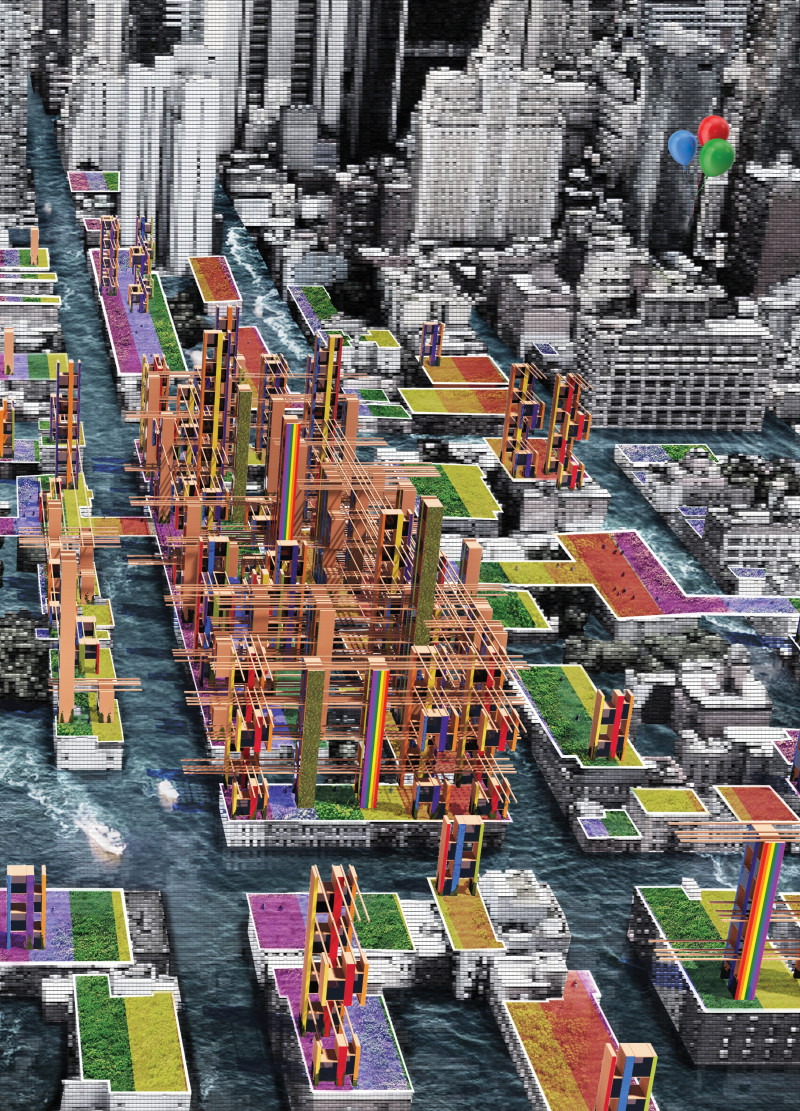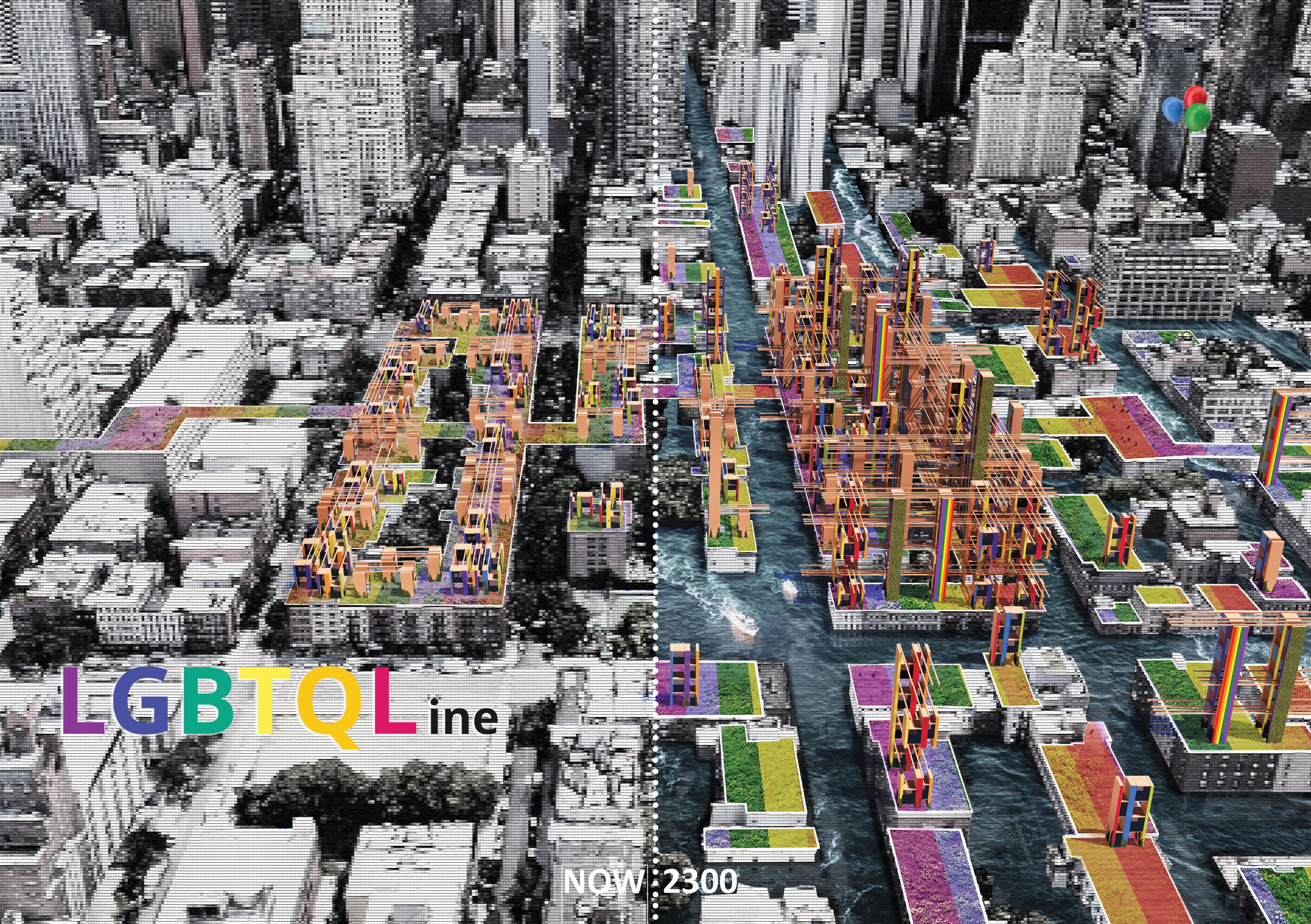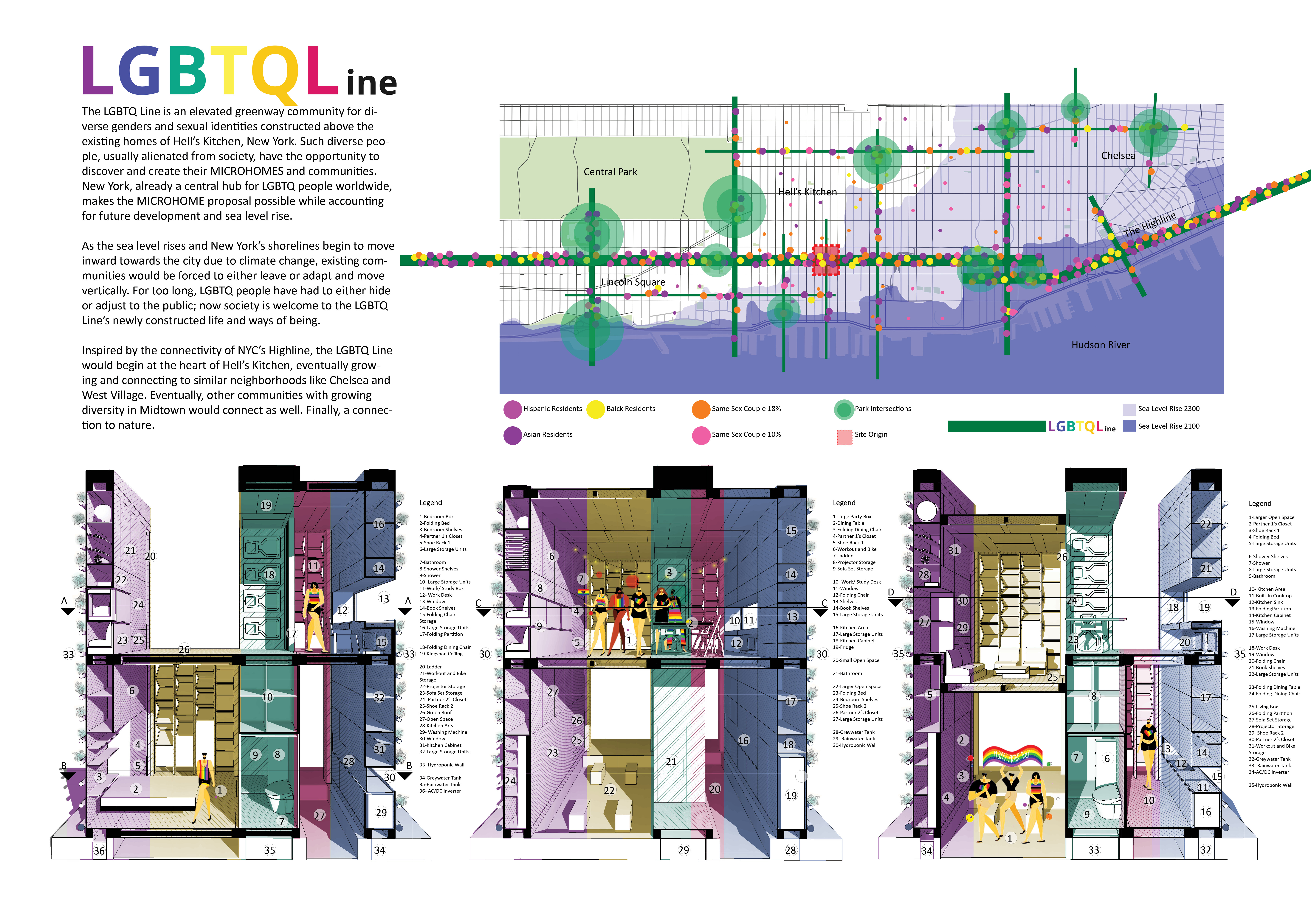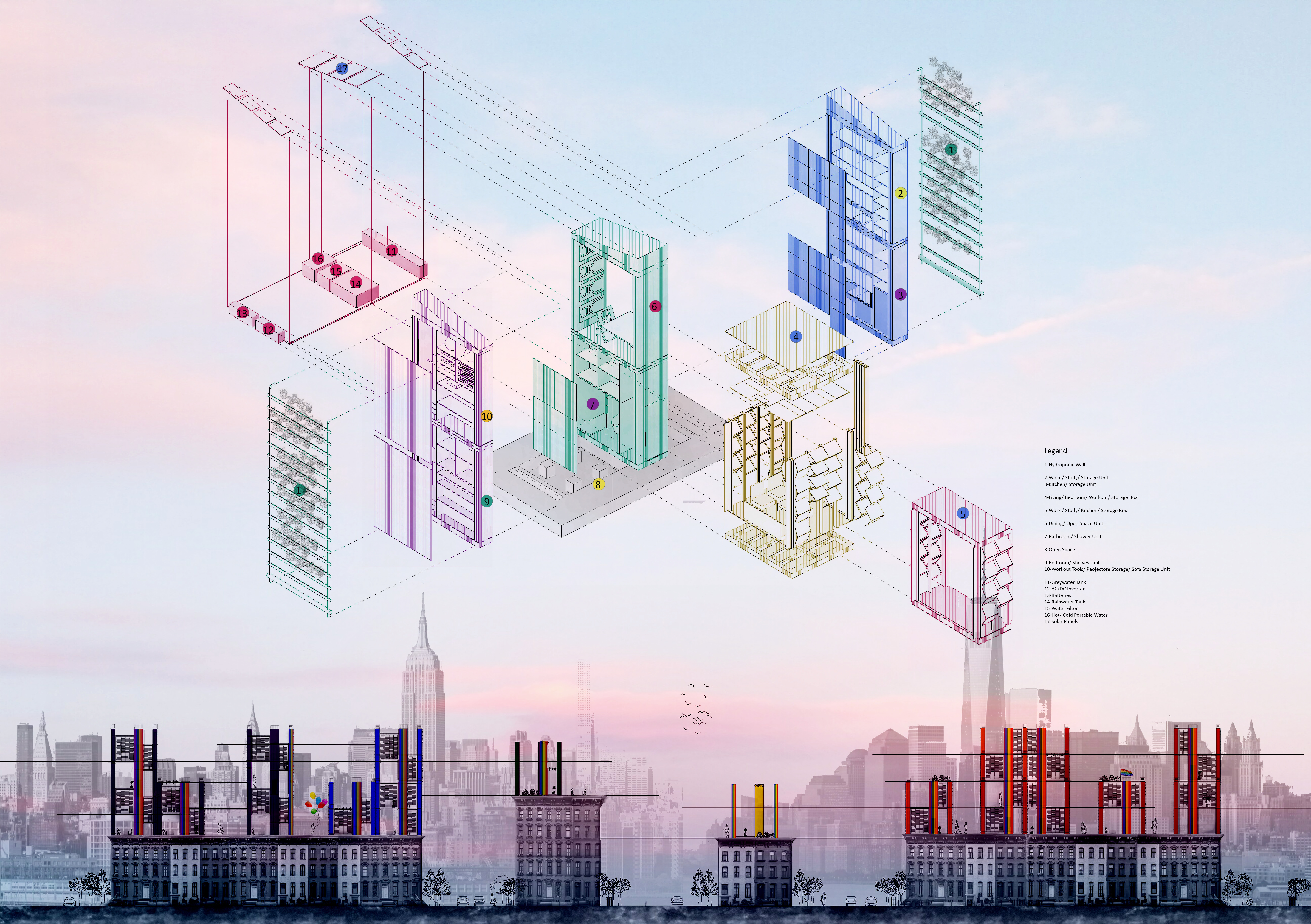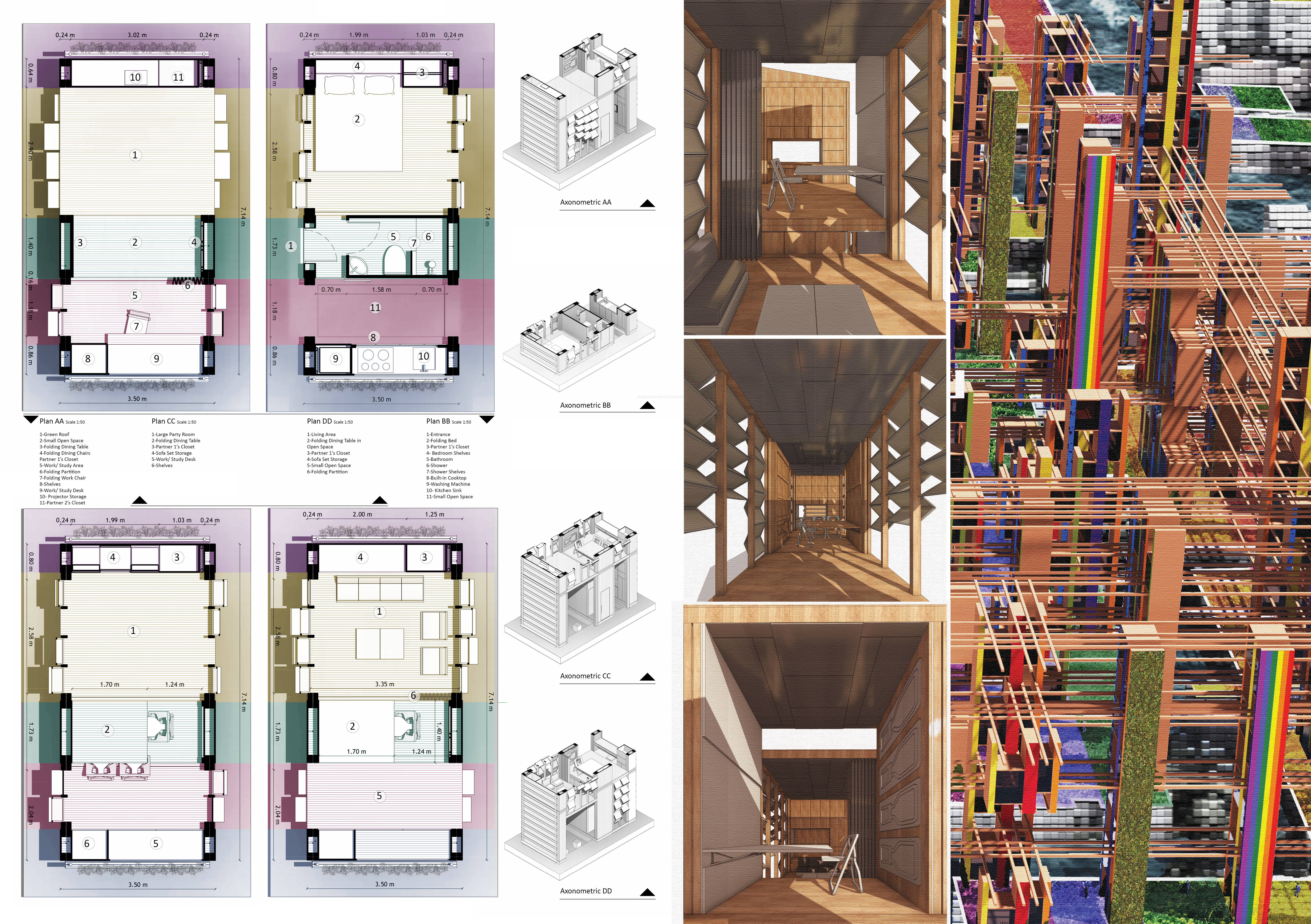5 key facts about this project
### Project Overview
The LGBTQ Line is an architectural proposal located in New York City's Hell's Kitchen neighborhood, designed to support a diverse community that encompasses various genders and sexual identities. The project aims to blend urban living with ecological sustainability and cultural affirmation, responding to contemporary challenges such as climate change, urban density, and the need for inclusive community spaces. Aiming toward completion by the year 2300, the design seeks to create environments that foster collaboration and engagement within the LGBTQ+ community.
### Spatial Strategy and Community Integration
The central spatial strategy involves transforming existing urban environments into elevated greenway spaces that house *Microhomes*, which are compact living units tailored to the diverse requirements of residents. This design draws inspiration from successful urban landscapes, facilitating connections between LGBTQ+ communities and neighboring districts like Chelsea and the West Village. The utilization of the waterfront along the Hudson River not only enhances the aesthetic appeal but also addresses critical issues such as rising sea levels and urban accessibility.
### Materiality and Environmental Considerations
The materials selected for the project emphasize sustainability and durability. The use of wood provides warmth and an environmentally responsible option for structural elements and finishes. Glass is incorporated to enhance visibility and natural lighting, contributing to residents' well-being. Steel serves as a robust support material, particularly in elevated sections, while composite panels in the facades ensure insulation and weather resistance. Permeable paving is utilized throughout the site for effective rainwater management and urban landscaping.
The design incorporates a forward-thinking approach to sustainability by mitigating urban heat and utilizing passive solar design to create energy-efficient living spaces. These strategies reflect a commitment to resilience in light of anticipated climate changes, creating an environment that is both functional and considerate of future challenges.


